In this O’Keeffe Inspired Close Ups lesson, students will create detailed images by zooming in on objects. This project covers Common Core Standards for Science for grade 7 which can be found at the end of the lesson.

Grade Level
Grades 6th, 7th, 8th Grade: this project was made by 8th graders.
Objective
In this O’Keeffe Inspired Close Ups lesson, students will create detailed images by zooming in on objects. For grade levels below middle school, I have included some directions for an alternative approach.
Time
1 60 minute lesson
or
2-3 – 60 min lessons
Materials
- Pencils
- Copy paper
For a more developed lesson:
- 9×12 Watercolor paper – Canson (100510941) XL Series Watercolor Pad, 9″ x 12″, Fold-Over Cover, 30 Sheets
- Liquid Water Colors – Sargent Art 22-6010 10-Count 8-Ounce Watercolor Magic Set
- Or this mini version for homeschooling – Sargent Art 22-6210 10-Count 4-Ounce Watercolor Magic
- Watercolor Pencils – Crayola 24ct Watercolor Colored Pencils
- Brushes – Acrylic Paint Brush Set, 1 Packs / 10 pcs Nylon Hair Brushes for All Purpose Oil Watercolor Painting Artist Professional Kits
- Photo of flower (I found calendars at a Dollar store of flowers)
Inspiration/Artist
Georgia O’Keeffe
Instruction with Questions
Have you ever walked around your home and noticed something new? Having a new perspective on things is an awesome gift for an artist.
Georgia O’Keeffe is a famous American art master who did this with her artwork. She liked to zoom in an object and paint the insides of things like flowers and make them look huge on the canvas.
Inspired by O’Keeffe, I painted a piece similar to her style which I attached. A print of this artwork is available on my website under prints or Click here. This is a picture of butterfly wings as they are unfolding. I wanted to capture it as it emerges from the cocoon.

Idea #1
For students of all ages:
Use the ideas on this website from The Arty Teacher Click Here. This art teacher has some great ideas about how to expand on how to get kids to look at items through a new “lens.”
Take, at minimum, 20 photographs. Select your favorite three images. If possible, print them out. Draw your favorite 3 close-up images from the photographs on a piece of paper. Decide if you want to leave it black and white, or color it. Maybe it will look like something else entirely!
Idea #2
Watch these videos about the artwork of Georgia O’Keeffe:
Tate Kids: Who is Georgia O’Keeffe: Click Here At the bottom of the overview there is a fantastic video presented by three kids around the age of 10.
O’Keeffe: A Brief History (School Friendly): Click Here
Georgia O’Keeffe at Tate Modern: Click Here
Georgia O’Keeffe: Flowers: Click Here
Day 1
Have students choose from a variety of flower images. I found $1 calendars at the Dollar Tree. Using a piece of copy paper, have students create a lens viewer.
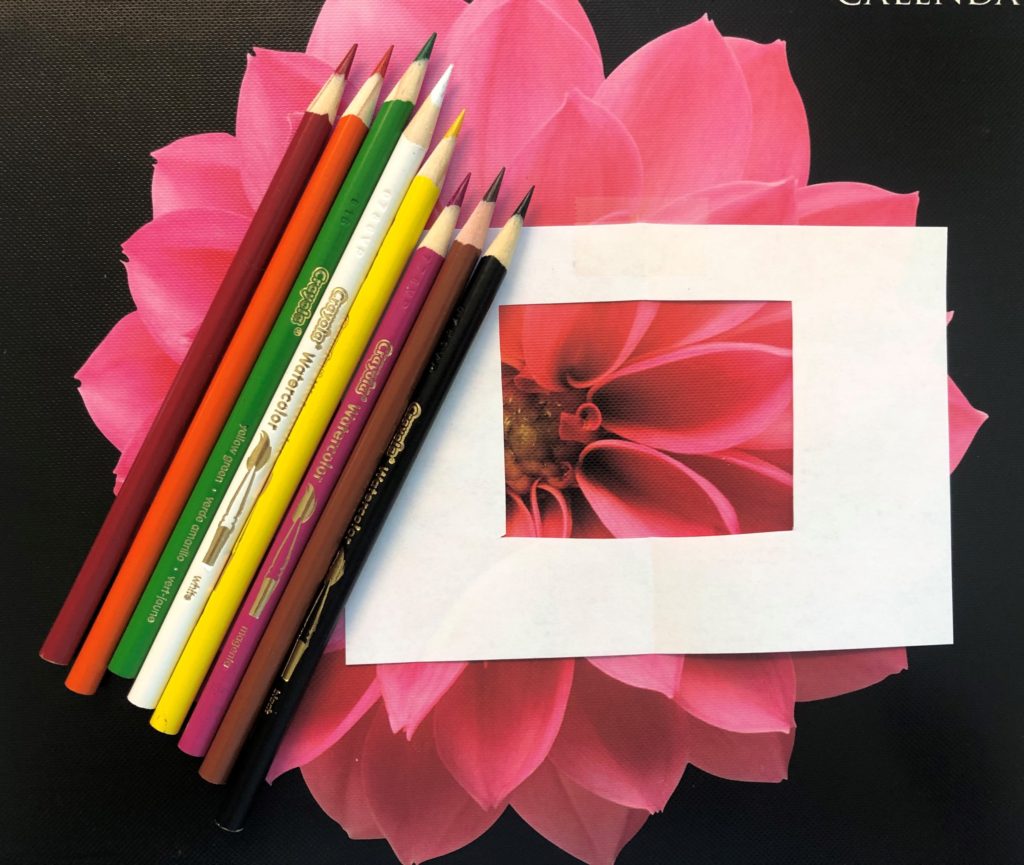
Fold a small piece of copy paper over, and cut out a small rectangle from the folded side. Open the paper and use this to zoom in on a variety of areas on the image.
Tape down your desired view.
Use watercolor pencils to lightly map out the image. Color can always be added to the paper to make things darker. It is very difficult to lighten an area. Adjust the intensity by changing the amount of pressure you use.
Here is a great video demonstrating this process. You may choose to show a portion or all of it to your students.
How to Use Watercolor Pencils – Techniques and Demonstration: Click Here
A great technique using these pencils, is to press firmly and add a dark line. Next, create value as you apply less pressure shading with the pencil from the dark line toward a lighter area. Finally, use the wet brush to drag the paint away from the line. This will help to create the ombre effect you desire. Continue to add layers of darker color pencil to areas you want to deepen.
As you can see from the finished products below, any lines that are drawn too firmly will create a textured look. To create a softer look, only press down on the darkest areas and allow the water to do the blending. Do not treat the pencils like a coloring book. Use the water and brush to drag and fill and allow white areas of the paper to shine through, making the artwork sing!
Here are some finished O’Keeffe Inspired Close Ups!
Common Core Standards
7th Grade – Science – Life Science
Structure and Function in Living Systems
5. The anatomy and physiology of plants and animals illustrate the complementary nature of structure and function.
f. Students know the structures and processes by which flowering plants generate pollen, ovules, seeds, and fruit.
Physical Principles in Living Systems (Physical Sciences)
6. Physical principles underlie biological structures and functions.
b. Students know that for an object to be seen, light emitted by or scattered from it must be detected by the eye.
d. Students know how simple lenses are used in a magnifying glass, the eye, a camera, a telescope, and a microscope.
e. Students know that white light is a mixture of many wavelengths (colors) and that retinal cells react differently to different wavelengths.
f. Students know light can be reflected, refracted, transmitted, and absorbed by matter.
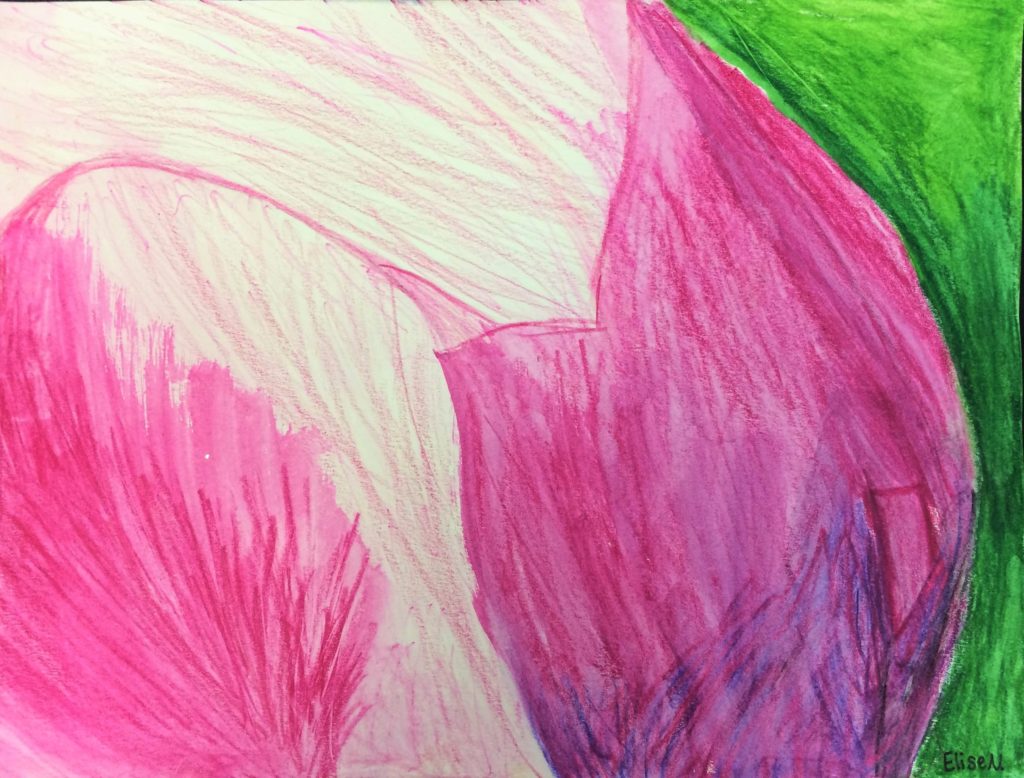
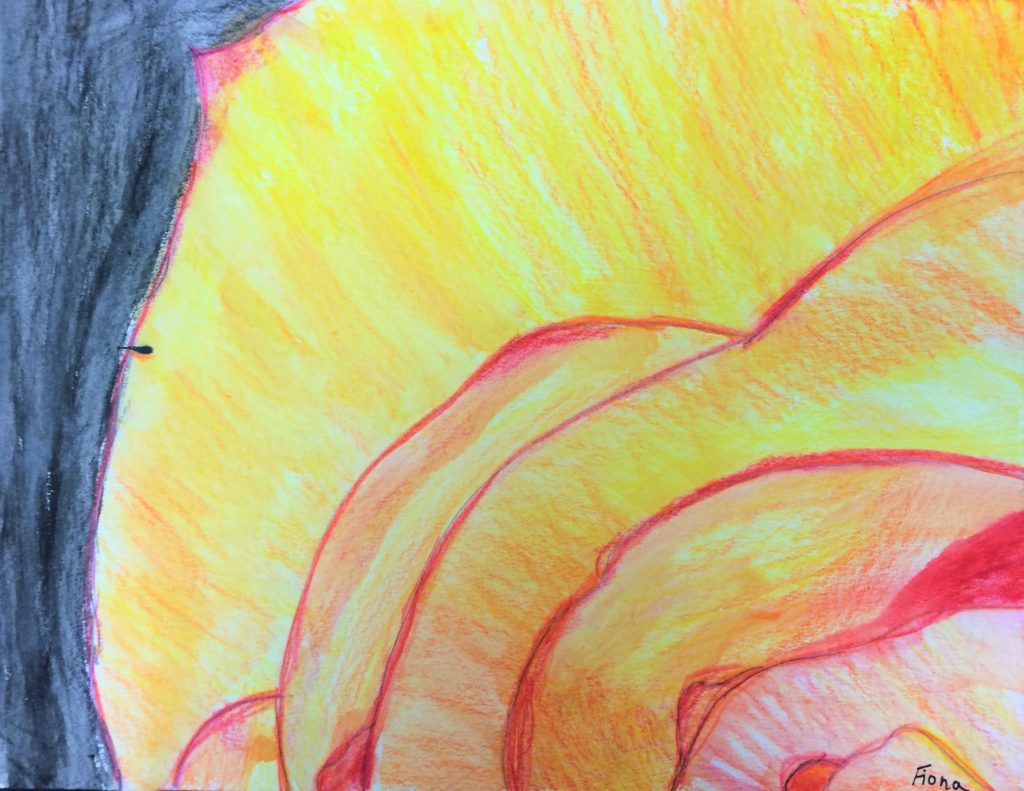

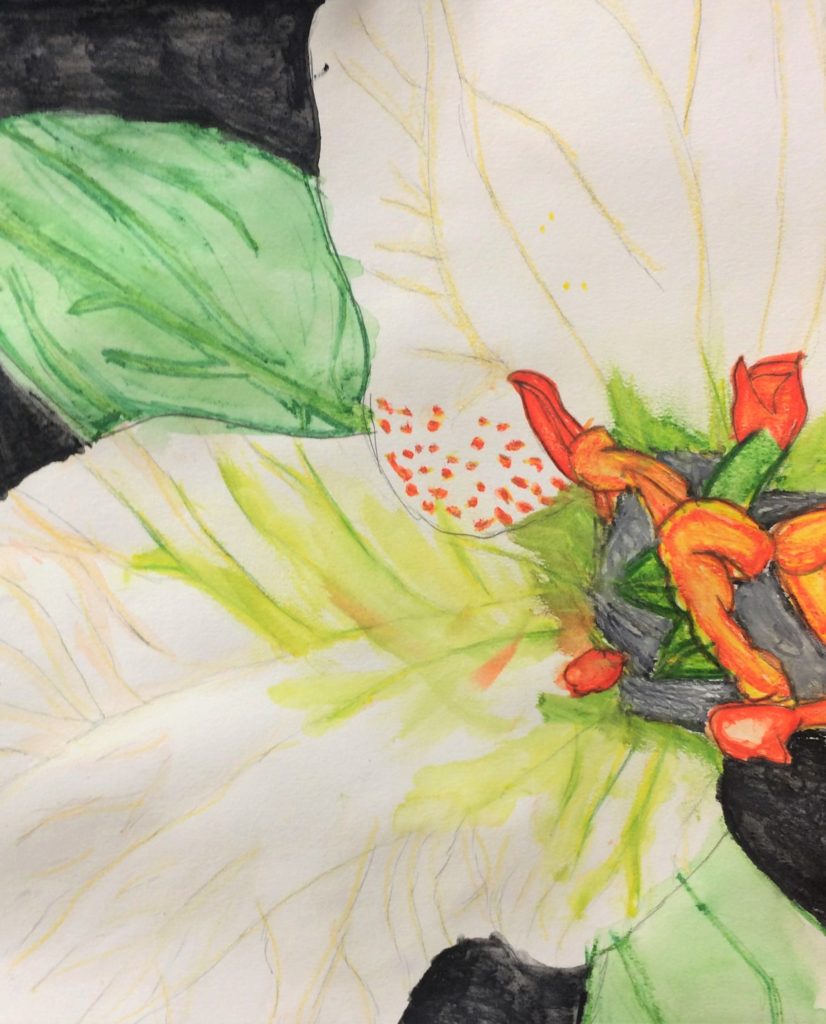
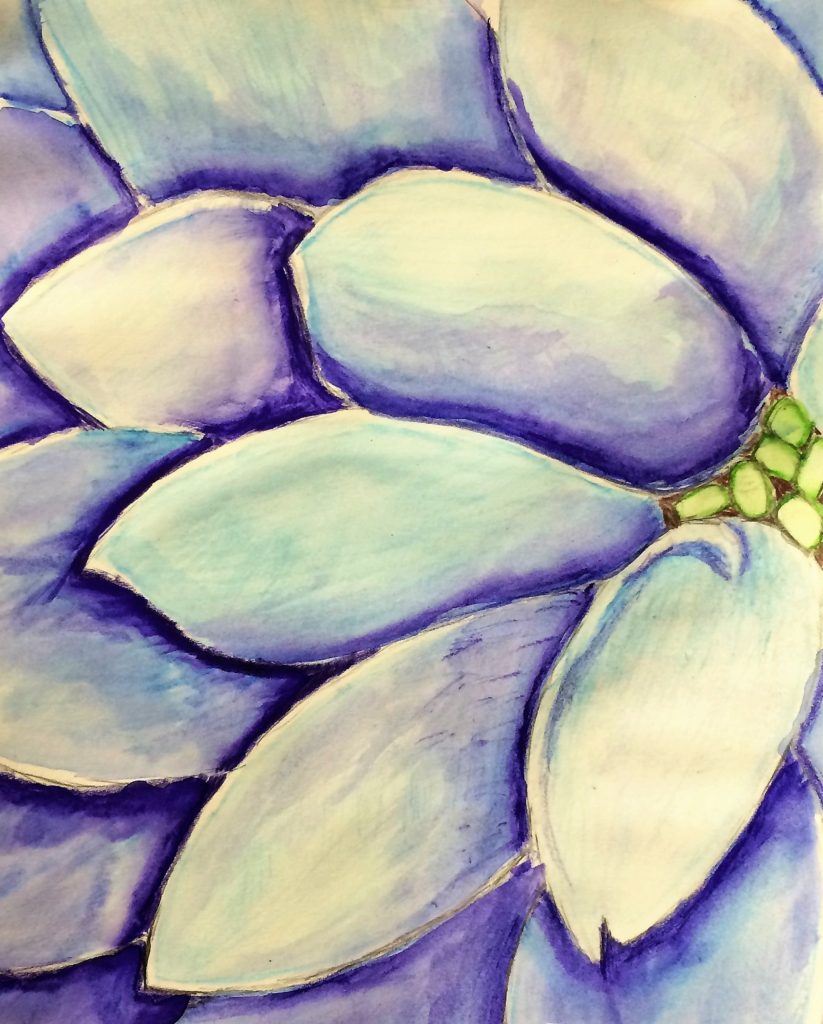


Leave a Reply